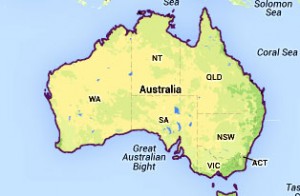Powerful cyclone hits Australia

Tens of thousands of people hunkered down as warnings of severe gales, flash flooding and storm tides continued through the night.
“Destructive winds with gusts to 140 kilometers per hour are possible between Cape Melville and Cape Tribulation for a period this morning,” the Bureau of Meteorology said.
The storm was moving at nine kilometers per hour and was “expected to continue moving south-southwest” and weaken through the early morning.
Nonetheless, winds gusting in excess of 110 kilometers per hour were expected to hit Port Douglas and Cairns later Saturday morning, and as far south as Cardwell, which is some 1,500 kilometers from Brisbane.
“Anything over 80 kilometers (per hour) is dangerous,” Cook Shire Mayor Peter Scott told the Australian Broadcasting Corp.
Article continues after this advertisement“Anything over 80K will put a piece of tin through you and chop your head off, it will lift roofs off, it will make severe damage, so the best place to be is staying inside.”
Article continues after this advertisementQueensland Premier Campbell Newman warned that homes built prior to 1985, when new building regulations were enacted, may not withstand the impact of the storm, and urged residents to head to local cyclone shelters.
Cyclone Ita made landfall at Cape Flattery at about 9:00 pm (1100 GMT), with winds up to 230 kilometers per hour near the core.
It was downgraded from a maximum level five to a weakening category four, before dropping to level three and then level two in the early hours of Saturday.
Tropical storms are common in northeastern Australia. This one is stronger but not as widespread as the monster Cyclone Yasi system that tore through the region just over three years ago, ripping homes from their foundations and devastating crops.
– Storm surges feared –
The Bureau of Meteorology also warned of heavy rainfall possibly leading to flash flooding and coastal inundation from a storm surge.
The possibility of dangerous surges prompted warnings for people to evacuate parts of Cairns south of Cooktown, with the ABC reporting that 30,000 people had been advised to seek shelter elsewhere.
The power of storm surges was shown in November, when Super Typhoon Haiyan pummelled the Philippines with record winds of 315 kilometers an hour. Entire towns were wiped out when tsunami-like waves crashed hundreds of metres (feet) inland.
Australia is much better equipped to handle natural disasters than its Asian neighbour.
Nevertheless, Newman warned that in the worst-case scenario, storm surges of up to two metres above normal high tides could hit areas including Cairns, depending on the cyclone’s path.
“I want people to know the government has done everything it possibly can and after the event, we’re mobilising to get in and help the affected communities,” he added, while warning that telephone and electricity lines could be down temporarily after the storm passes.
Brendan Cullen, manager of the Sovereign Resort Hotel, one of three hotels in Cooktown, said locals were used to cyclones and had prepared their homes and businesses by taping up windows and securing debris.
But he said concerns were growing.
“We’re worried about it landing right on top of us and the storm surge,” Cullen told AFP.
“As far as the general feeling in town, it’s a windy place anyway so it’s not as if there’s a lot of debris lying around.”